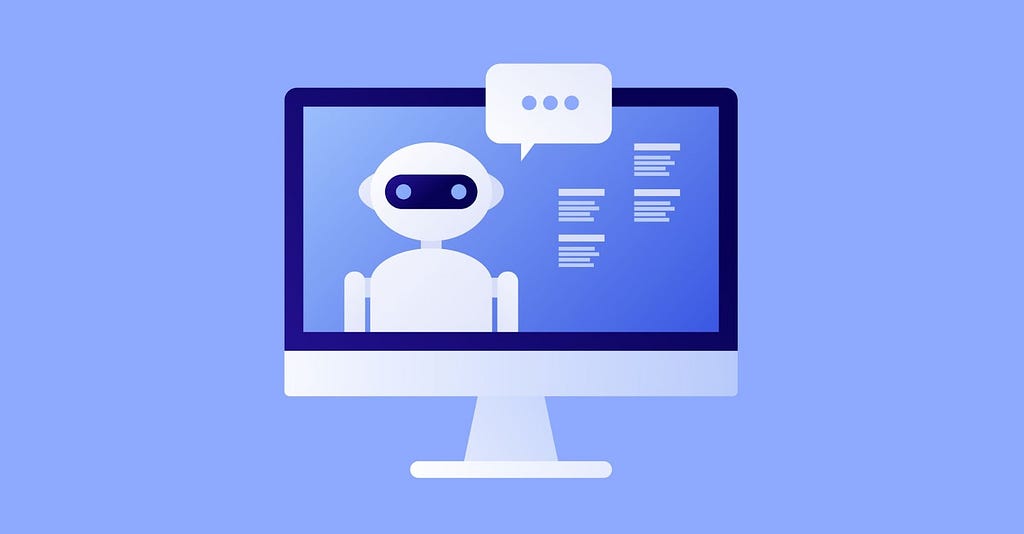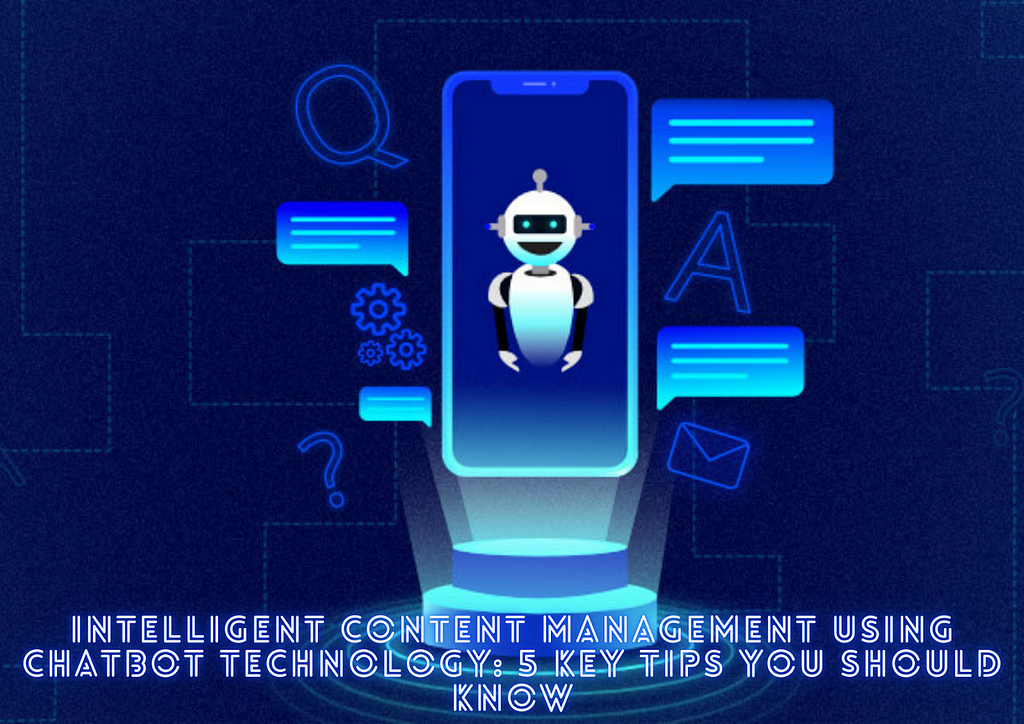 |
submitted by /u/ACertainKindOfStupid [link] [comments] |
Category: Chat
-
Open Source Chatbot Framework for NodeJS, configurable with JSON.
-
5 Benefits of Chatbot Technology for Your WordPress Site in 2021
Source: https://www.comm100.com/wp-content/uploads/2020/10/image/jpeg/Comm100_BlogImage_BotTech.jpg Chatbot technology has been around for a while now, and it seems to be gaining in popularity and global market value every year, and for a number of reasons. For one, modern chatbots leverage artificial intelligence and machine learning to create truly engaging experiences and handle more complex challenges, which is something that their predecessors couldn’t achieve. In the grand scheme of things, modern, AI-driven chatbot technology can help grow your business in the online world by elevating your marketing, sales, and support processes.
There are numerous chatbots that you can try depending on your needs and long-term goals, but before you start integrating and optimizing this technology, you need to gain a deeper understanding of its potential. Integrating a chatbot into a WordPress site is a relatively straightforward process nowadays, however, it’s important to understand its uses and potential applications in order to leverage it for growth and success in 2021 and beyond.
Let’s talk about the key benefits of chatbot technology for your WP site that you need to know in 2021.

Cut waiting times to zero
A slow loading time can ruin a website’s chances of ranking high in the relevant search results, simply because modern customers won’t wait more than three seconds for your website to load fully and properly. So why would they wait around for you to answer their questions or address their concerns? Your ability to address the needs of your customers immediately can significantly boost your conversions, customer retention, and the lifetime value of the individual — but if your reaction time is slow, you risk losing them for good.
That’s why it’s so important to have a live chat software on your website so that your customer service agents can engage with them quickly. But what happens when people try to reach you when your team is out of the office? Keep in mind that people want answers to their questions now, not later or the next day, which is why it’s so important to have a chatbot that will engage with your customers and cut the wait times to zero.
Nowadays, chatbot technology is advanced enough to provide conversational experiences, and is able to handle more complex customer queries, ensuring that the customer will most likely find a solution to their problem by engaging with your chatbot right there on the spot. If their problem is more complex and requires a human customer success agent, then the chatbot can easily forward the request to your team.
Trending Bot Articles:
2. Automated vs Live Chats: What will the Future of Customer Service Look Like?
4. Chatbot Vs. Intelligent Virtual Assistant — What’s the difference & Why Care?
Create an engaging experience
In the competitive online world, engaging your customers in meaningful conversation across a variety of relevant touchpoints and channels should be one of your top priorities. Fortunately, there are many ways you can elevate customer engagement through proper branding, personalized communication, gamification, social proof and content marketing, and more. But what you might not have known is that you can also leverage your website’s chatbot to deliver personalized, engaging experiences to your users and returning customers.
One of the biggest benefits of conversational AI is its ability to personalize the user experience on your website for the individual according to their browsing behavior, purchase history, and the way they interact with your brand. Most importantly, though, a conversational chatbot will also make the interaction feel natural and organic, moving the conversation towards a solution and a desirable outcome for both you and the user.
Complete your omni-channel support structure
Building omni-channel experiences should be one of your key long-term goals if you want to boost brand awareness and trust, but at the same time reach more potential customers and generate qualified leads. Keep in mind that the modern customer uses numerous digital channels to find relevant information, products, and the solutions to their problems, and it’s important for your brand to have a presence on all those channels in order to provide seamless support and guidance.
Having an omni-channel support structure is one of the key digital marketing trends and sales tactics nowadays, and a website chatbot would help you complete your omni-channel strategy. Installing a chatbot on your WordPress site will allow you to deliver a seamless brand experience when a customer ventures to your site from a social media platform, for example, by offering a consistent brand narrative and a quick fix to their problems.
Use a chatbot to boost your marketing strategy
In recent years, chatbot marketing has been on the rise across platforms and industries because of its ability to guide customers towards different solutions seamlessly and without them having to engage in conversation with a support agent. Not every customer wants or needs to talk to a human representative, as many people simply want a quick answer to their question in order to decide on a product. Whether they have a simple question or want to learn more about your products or services, you can easily guide them down the right path with a conversational chatbot on your site.
This is one of the best ways to use a chatbot in your marketing strategy, as the chatbot can offer different conversation paths based on the customer’s needs. As you might have guessed, this allows you to perfectly align the interaction with the user intent.
For a user who is looking for quality information but is not ready to buy anything, your chatbot can select some high-quality articles or direct them to your learning center. But for the customer who is ready to buy, the chatbot can help improve sales by allowing them to place an order immediately, or provide them with additional information that will prompt them to buy.
Leverage chatbots to drive business intelligence forward
Data science is quickly taking over as a key driver of business success in a world where technology is affecting the future of customer service and marketing. Now that millions of people are using online services and platforms to buy products, educate themselves, and build meaningful connections with their favorite brands, you need to leverage the right tech to collect and organize that valuable data.
The more information you have about your customers and your market, and the prevailing trends in your industry, the more equipped you are to make better strategic decisions and investments.
That said, you can’t capitalize on such vast amounts of data without the help of artificial intelligence, which is why AI-driven big data analysis is the key to the success of data science in your company. As you might have guessed, a conversational chatbot can act as another smart data collection tool that will generate valuable insights from customer interactions on your website.
You can use this data to drive numerous key processes forward, and optimize your approach to sales, marketing, and support based on the data that your chatbot collects automatically. You even take things a step further by using your chatbot to deliver engaging feedback options to your website visitors and inspire them to leave more detailed feedback to help you drive innovation and your entire business forward.
Over to you
Integrating a chatbot into your WordPress site, whether you’re using it as a SaaS site, an Ecommerce store, or a blog, would be a wise business move in 2021 and going forward. There are many benefits to having a conversational chatbot as a key part of your brand experience, and in the long run, you can expect this technology to help you acquire and retain customers with ease.
Don’t forget to give us your 👏 !



5 Benefits of Chatbot Technology for Your WordPress Site in 2021 was originally published in Chatbots Life on Medium, where people are continuing the conversation by highlighting and responding to this story.
-
“Speech Recognition” August 2021 — summary from Arxiv, Europe PMC and Springer Nature
“Speech Recognition” August 2021 — summary from Arxiv, Europe PMC and Springer Nature
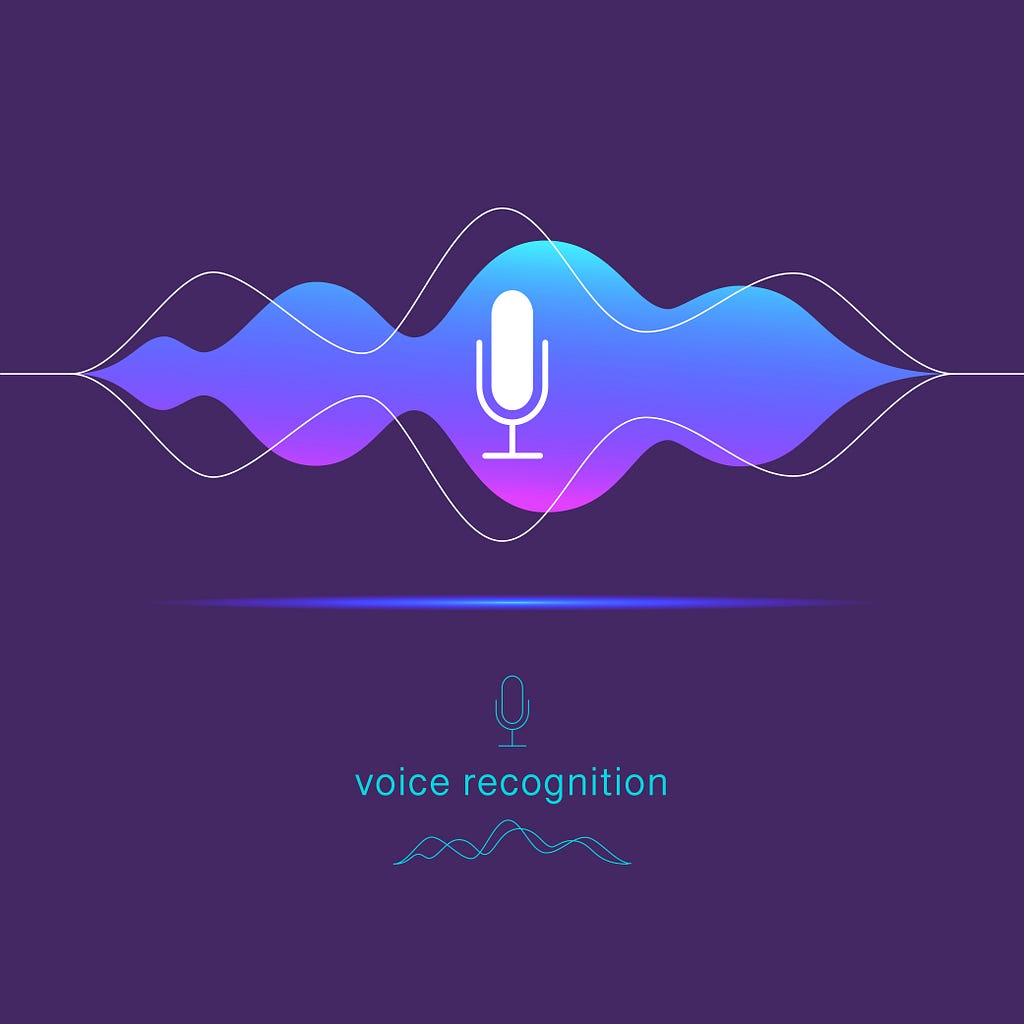
Arxiv — summary generated by Brevi Assistant
It’s challenging to personalize transducer-based automated speech recognition system with context information which is inaccessible and vibrant during version training. Experiments reveal that the design improves standard ASR model performance with about 50% relative word mistake rate decrease, which also substantially outperforms the baseline approach such as contextual LM biasing. In this paper, we provide AISHELL-4, a sizable real-recorded Mandarin speech dataset gathered by 8-channel round microphone selection for speech processing in conference scenario. Provided most open resource dataset for multi-speaker tasks are in English, AISHELL-4 is the only Mandarin dataset for conversation speech, supplying added worth for information diversity in speech neighborhood.
Subword units are commonly utilized for end-to-end automated speech recognition, while a completely acoustic-oriented subword modeling approach is somewhat missing out on. Experiments on the LibriSpeech corpus show that ADSM plainly surpasses both byte pair encoding and pronunciation-assisted subword modeling in all cases. The task of speech recognition in far-field settings is adversely influenced by the resonant artefacts that evoke as the temporal den….tion of the sub-band envelopes. Further, the series of actions associated with envelope dereverberation, attribute removal and acoustic modeling for ASR can be applied as a solitary neural processing pipeline which enables the joint learning of the dereverberation network and the acoustic design.

As speech-enabled gadgets such as smartphones and smart speakers become increasingly common, there is expanding rate of interest in building automatic speech recognition systems that can run straight on-device; end-to-end speech recognition versions such as frequent neural network transducers and their variants have lately emerged as prime prospects for this task. Automatic speech feeling recognition is a challenging task that plays an important function in all-natural human-computer communication. Among the main challenges in SER is information scarcity, i. e., insufficient quantities of thoroughly labeled information to construct and fully discover intricate deep learning models for emotion classification.
Please keep in mind that the text is machine-generated by the Brevi Technologies’ Natural language Generation model, and we do not bear any responsibility. The text above has not been edited and/or modified in any way.
Source texts:
- https://arxiv.org/abs/2108.07493v1
- https://arxiv.org/abs/2104.03603v4
- https://arxiv.org/abs/2104.09106v3
- https://arxiv.org/abs/2108.05520v2
- https://arxiv.org/abs/2104.02207v3
- https://arxiv.org/abs/2108.02510v4
Trending Bot Articles:
2. Automated vs Live Chats: What will the Future of Customer Service Look Like?
4. Chatbot Vs. Intelligent Virtual Assistant — What’s the difference & Why Care?
Europe PMC — summary generated by Brevi Assistant
This work concentrates on durable speech recognition in air traffic control service deliberately a novel processing paradigm to integrate multilingual speech recognition into a solitary structure using three cascaded components: an acoustic model, a pronunciation model, and a language version. We confirm the proposed method utilizing huge quantities of real Chinese and English ATC recordings and attain a 3.95% label mistake rate on English words and chinese characters, surpassing various other prominent strategies. History Clinicians routinely make use of impacts of speech as an element of mental condition examination. Individuals with predominantly positive v. adverse signs and symptoms could be identified with an accuracy of 74.2%. Goal To explore the impact of optimal power output of bone conduction hearing tools on speech recognition in silent and in sound in skilled users of bone transmission hearing gadgets. Outcomes Both speech recognition in quiet and speech recognition in sound improved substantially when using the gadget with high vs. lower maximum power output. Goal To contrast differences in audiologic results between slim modiolar electrode CI532 and slim side wall electrode CI522 cochlear dental implant receivers. Approaches Comparison of postoperative AzBio sentence scores in silent in adult cochlear implant recipients with SME or SLW matched for preoperative AzBio sentence scores in peaceful and helped and alone pure tone standard. Objective Congenital acoustic atresia triggers severe conductive hearing loss disturbing acoustic development. Individuals with aural atresia had fairly high proper response rates for monosyllables with low right response rates by patients with SNHL. Function Knowing target location can enhance grownups’ speech-in-speech recognition in complicated auditory atmospheres, yet it is unidentified whether children listen uniquely in space. This research study reviewed covered up word recognition with and without a pretrial cue to location to characterize the impact of listener age and masker type on the advantage of spatial cues.
Please keep in mind that the text is machine-generated by the Brevi Technologies’ Natural language Generation model, and we do not bear any responsibility. The text above has not been edited and/or modified in any way.
Source texts:
- https://europepmc.org/article/MED/32833649
- https://europepmc.org/article/MED/34344490
- https://europepmc.org/article/MED/34369239
- https://europepmc.org/article/MED/34399646
- https://europepmc.org/article/MED/34370598
- https://europepmc.org/article/MED/34403280
Springer Nature — summary generated by Brevi Assistant
Speech recognition in loud environments is just one of the long-lasting research styles however remains a very essential challenge nowadays. We use the general public Arabic Speech Corpus for Isolated Words, three noise degrees, and 3 noise types. This work proposes an unique stochastic deep resilient network for speech recognition. The novelty of the SDRN network is in making use of NOWOA to acknowledge huge vocabulary separated and constant speech signals. The internal schedule of silent speech offers as a translator for people with aphasia and maintains human — machine/human communications functioning under various disturbances. In the approach, the tattoo-like electronic devices imperceptibly connected on facial skin record high-quality bio-data of numerous quiet speech, and the machine-learning algorithm released on the cloud acknowledges properly the quiet speech and lowers the weight of the cordless procurement module. Automatic speech recognition might potentially improve communication by giving transcriptions of speech in real time. We tested the performance of three cutting edge ASR systems on two groups of people with neurodegenerative condition and healthy and balanced controls. In the field of speech recognition systems, existing work concentrates only on the classification of speech right into a stammering speech or a regular speech. Significant renovations consisted of in this research study contrasted to previous implementations is developing a new deep-learning algorithm, which improves speech recognition for people dealing with stammering. Determining people’s sensations when they talk is relatively simple as a result of the tone and language with which they express themselves. With view analysis formulas in combination with voice recognition and the basic usage of NLP, it is feasible to produce intelligent systems that enable the analysis of people’s sensations based on the audible message that they discharge.
Please keep in mind that the text is machine-generated by the Brevi Technologies’ Natural language Generation model, and we do not bear any responsibility. The text above has not been edited and/or modified in any way.
Source texts:
- https://doi.org/10.1007/s10772-021-09847-7
- https://doi.org/10.1007/s10772-021-09851-x
- https://doi.org/10.1038/s41528-021-00119-7
- https://doi.org/10.1007/s10772-021-09836-w
- https://doi.org/10.1007/s10772-021-09828-w
- https://doi.org/10.1007/978-3-030-68663-5_10
Brief Info about Brevi Assistant
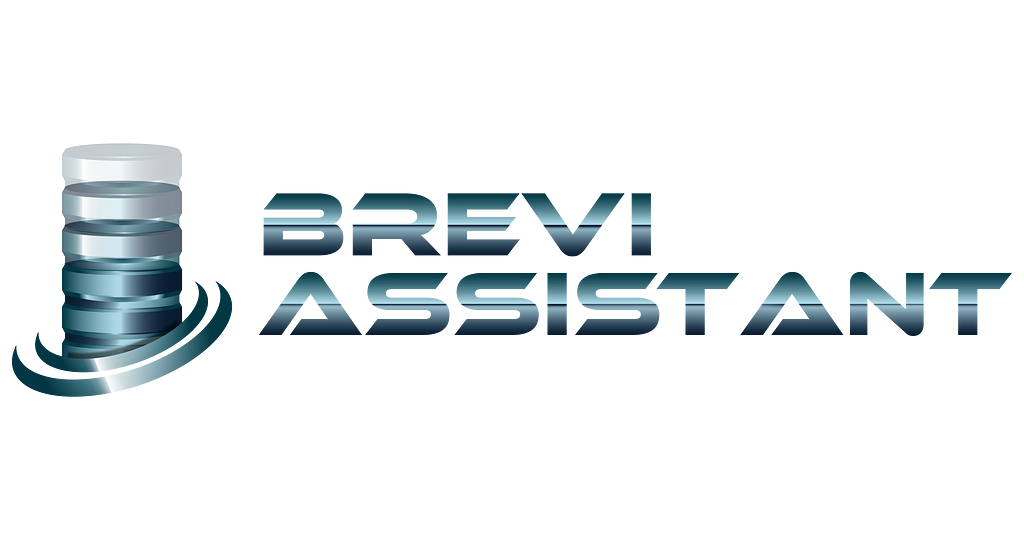
The Brevi assistant is a novel way to automatically summarize, assemble, and consolidate multiple text documents, research papers, articles, publications, reports, reviews, feedback, etc., into one compact abstractive form.
At Brevi Assistant, we integrated the most popular open-source databases to empower Researchers, Teachers, and Students to find relevant Contents/Abstracts and to always be up to date about their fields of interest.
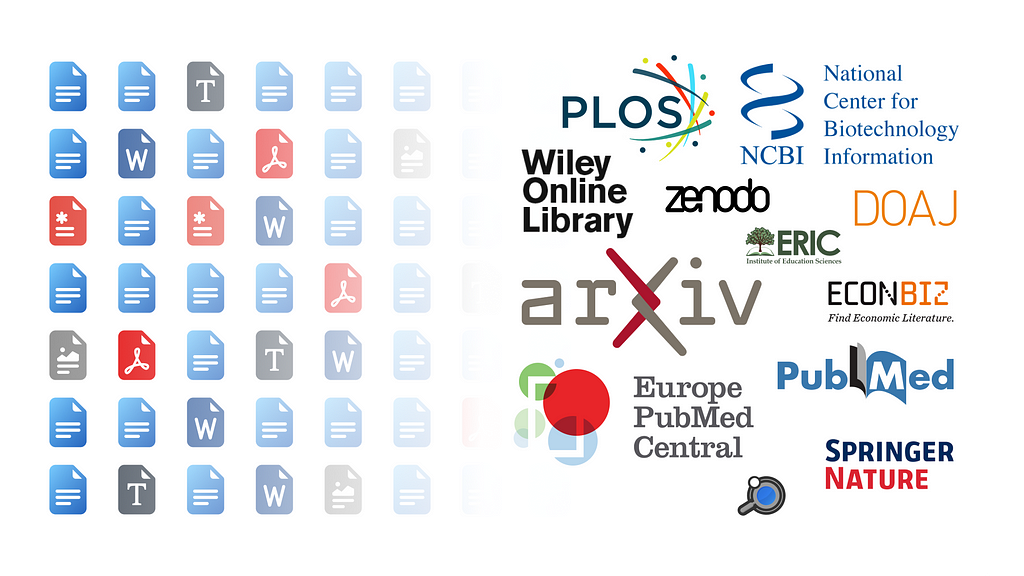
Also, users can automate the topics and sources of interest to receive weekly or monthly summaries.
Don’t forget to give us your 👏 !



“Speech Recognition” August 2021 — summary from Arxiv, Europe PMC and Springer Nature was originally published in Chatbots Life on Medium, where people are continuing the conversation by highlighting and responding to this story.
-
Outdoor Advertising Advantages When Combined With Voice Technology

Where is the next great marketing innovation coming from? The advertising industry has changed drastically over the last decade, especially outdoor advertising. New technologies are pushing the industry forward with artificial intelligence, machine learning, voice search, and digital out of home (DOOH). Also, we need to consider the outdoor advertising advantages when used in collaboration with voice technology.
More and more advertising space is now available online, and digital out-of-home (DOOH) solutions have expanded significantly.
Most recently, COVID-19 has become a major disruptor in the world of outdoor advertising. It has disrupted the ways in which humans interact with the world, but, in non-pandemic years, people spend 70% of their time outside at work or school, commuting to shopping, or doing other activities. Outdoor is where OOH shines as a medium-allowing advertisers to reach those who spend most of their time outdoors.
However, outdoor advertising is again on the rise. There’s a lot to keep an eye on in the space, but marketers need to be ready for what comes next.

The current state of outdoor advertising advantages
Outdoor, or Out-of-Home, advertising is making a comeback. With users becoming more and more tired of being bombarded with advertisements online and on their mobile devices, outdoor advertising is ideal for businesses seeking authentic exposure.
Out-of-home advertising allows consumers to see a brand in their natural environment and contributes heavily to an attractive brand image. It’s effective in creating brand loyalty and remaining consistent through multiple brands, products, and services. It’s also a great way to drive traffic to your business, which can lead to an increase in sales.
Basic outdoor advertising advantages
Creativity
This translates to better methods of attracting the attention of your audience and getting them to see your banner.
People can never avoid seeing one
There is no AdBlock service for outdoor advertising, and people will always have their attention attracted towards banners or billboards.
It is open to new technologies
OOH and DOOH have always been welcoming towards new technologies that can help them perform better and retain more engagement data.
It grants exposure to millions of people
When choosing the right location, a single banner, billboard, or bus-side ads, it can generate millions of views. Also, if it does not reach the desired number of sales, it surely generates a lot of brand exposure.
Trending Bot Articles:
2. Automated vs Live Chats: What will the Future of Customer Service Look Like?
4. Chatbot Vs. Intelligent Virtual Assistant — What’s the difference & Why Care?
Budget trends in OOH & DOOH advertising
The total DOOH market in Europe is worth nearly €9.4 billion in 2021. While this is small compared to the €28.5 billion achieved in the traditional OOH market, we expect it to grow to €13 billion by 2024, while conventional OOH will remain relatively flat. DOOH is now the second-fastest-growing advertising medium (trailing only the mobile internet) and is predicted to account for over 30% of OOH revenue in some mature markets.
Outdoor advertising problems and how to solve them
Out-of-home advertising, TV advertising, and other forms of advertising that do not provide a saving option focus on connecting with people while they are on the go or busy-with-hands. It can be while they are outside their homes or home doing “after-work” chores or routines.
According to IAB, Out of Home (OOH) advertising channels lose parts of the budget dedicated to marketing by companies compared to online advertising channels. It happens because outdoor advertising channels have a lower interaction time than online platforms, and there isn’t any precise tracking. Let’s find out some problems marketing teams face when using these channels:
Reduced time of exposure
The OOH & DOOH ads and other similar media need to be assimilated in a short amount of time. In some cases, the audience might not have that short amount of time to evaluate and come to a decision regarding the ad. Targeting media that has a short exposure time is difficult.
Not anyone driving past a billboard is part of the target market. Exposure time is short, so messages are limited to a few words and/or illustrations. What if users want more information?
Difficulty in measuring the audience
It is challenging to measure the audience regarding these forms of publicity. For example, to provide reliable metrics on a (D)OOH system’s audience, you need to use heterogeneous research or technological tools. But, more than challenging, it is not possible to have valuable information for these audiences that you can share with the brand the ad is about.
No Lead generation possibility
One of the strong points of outdoor advertising is the vast audience they target. There is 100% Human traffic, ads are unskippable, no ad blocking option, and people can view the ad every day if they have the same walking routine. Does your company have this data? Who are these people? Is there a way to get their phone, email, or name if they are interested in what they see? The current technology does not provide that.
The outdoor advertising advantages of using Voice Technology as a solution
The solution is hidden in Artificial Intelligence, specifically in Voice Technologies. Voice is the most natural way for people to communicate with each other, and lately with brands. It is natural to ask with voice questions like where to find this or that service.
How is this possible: thanks to voice applications.
Users face every day a call for a link to click. Outdoor advertisements like ads in buses, buildings, and more need to generate awareness and increase numbers on marketing reports. The same happens with an ad displayed on a billboard or a bus station display. However, there is a lot of friction to access these links while in the real world.
Through voice applications, you can enhance the user’s experience from OOH advertisements by sending it to a voice assistant. It can be easily activated via voice on a mobile phone and then let the conversation begin. The experience with the brand is naturally extended.
What is a Voice Application?
A Voice Application is a voice-enabled software application that can respond to spoken commands or queries. Such applications can be used in the home, workplace, in the car, or on mobile devices. In our case, we are referring to voice applications like Alexa Skills and Google Actions.How can Voice Applications work for Outdoor Advertising
When a brand requests a D/OOH marketing campaign, all your company needs to do is to create and integrate a voice application dedicated to that campaign. Ipervox will help you create the voice application, be it an Alexa Skill or a Google Action. This voice app will be designed to enhance the user experience with the ad and extend the ad’s time of exposure to the user.
Next, your company will take care that the creatives include the wake word of the voice application inside of them. The wake word will serve the customer to easily access the voice app, using a single voice command.
When the user sees the advertising, the only CTA for them is to activate the voice application for further information. Also, they will be able to save the link, access it later, and much more than that.
What are the pros of this methodology (there are no cons)
Voice Applications are the bridge between Outdoor Advertisement and target audiences that, for the moment, can give power to these marketing channels. They can generate a higher number of leads, users & potential clients data, deeper analytics, and more.
An extended time of exposure
Thanks to the voice application dedicated to that campaign for different advertising channels, the user can ask their smartphone with the wake word and get all the information needed without stopping what they are doing. The communication happens in less than a minute; thus, there is no problem if the user is moving or with busy hands. The voice app can inform the user directly or send an SMS/email on their phones with detailed information regarding the offer.
Easy and frictionless way to measure the audience
You can bring back OOH advertising power thanks to the voice applications. The company can easily, through Ipervox, have the data of all interested users that want to know more about the publicity they were exposed to. Once the user activates the voice app, we can get the user’s data, like email or even phone number. This also gives the possibility of distinguishing the users from specific ads, giving valuable data for A/B testing, or even ad location and channel distribution.
Lead generation for each advertisement
Each advertising done through these channels can have the possibility of displaying a call to action with voice. The marketing company can also quickly gather data for each ad. The users that will activate the voice app to know more about the product can now be converted into identifiable leads. This is compared to previously, where there was no tracking of the users that gained interest from the ads.
You have to consider that, without the use of Voice Applications, the user needs to act immediately, either because the ad moves too fast or because they have to keep going. They need to memorize something from the ad, be it the company’s name, some link URL that invites them to go and visit it, or price, product logo, and more. A lot of information, little time.
Using Voice Applications instead, can really enhance the existing Outdoor Advertising Advantages and much more. In this case, the user does not need to stop what they are doing. Since the ad will lead the user to the voice app’s activation, they can ask their smartphone by voice to activate the app that gives more information regarding the advertisement. They can also ask for more information to be sent to their emails or phones as a text message and learn more about it later. There is no need to take notes, remember anything, or leave it for later (and probably forget about it).
Don’t forget to give us your 👏 !



Outdoor Advertising Advantages When Combined With Voice Technology was originally published in Chatbots Life on Medium, where people are continuing the conversation by highlighting and responding to this story.
-
How To Use A Chatbot & VoIP Together For Better Customer Service?
The advancement of the Internet has brought changes in almost every field. One of those changes is the shift of customer support to the Internet. Email support, live chat, chatbots, and conversations on social media are just some of the countless examples of virtual customer service.
With a bit of help from artificial intelligence, companies are skyrocketing their customer support to a whole new level. Artificial intelligence helps place various customer support channels on one single platform, and it easily automates the tasks that traditionally consumed a lot of human time. Managing customer support has become very easy for companies, and as far as the customers are concerned, they get a seamless user experience at every support channel.
Does this automation mean that we should move on from using traditional customer support channels, such as VoIP (Voice over Internet Protocol)? The answer to this question is NO. A lot of users value human contact more than any conversation with robots or AI bots.
Fortunately, you don’t have to pick between AI Chatbot and VoIP. Instead, you can combine these two to make your service even better.
Importance of Voice Calls in the Era of Chatbots
Over many customer service channels, local users still prefer voice calls to get their queries solved. A comprehensive study by BrightLocal shows that around 60% of the customers like to call the company to get more information after finding them online. Moreover, only 16% of the users are inclined to use email support, and people just shy away from using social media for having a conversation.
No matter what type of company you are in, be it SaaS or e-commerce, voice calls allow you to build a more reliable relationship with your customers. With voice calls, the users rest assured that real people are supporting the business, not just AI and bots. Even after being so sophisticated, AI still lacks that human touch.
Customers are starting to notice the missing human elements. According to a study by PWC, around 60% of people globally believe that many businesses have lost the human touch in their customer service. Moreover, 71% of Americans claim that they would rather have a conversation with human executives than AI chatbots.

Overcome the Challenges Faced in Voice Call Support
While voice calls are still the backbone of the customer support industry, they might face some problems, including:
- Low customer satisfaction
- There are just too many tools
- The reporting and analytics is not accurate
- Poor performance and employee dissatisfaction
One of the best ways to improve the effectiveness of voice call support is by switching from a traditional phone system to VoIP. Unlike PBX or analogue phone systems, the data in VoIP is transmitted over the Internet.
In VoIP, there are features like call queuing and call routing, which ensures that the customers connect with the right agent at the right time. Moreover, VoIP can enhance the quality of voice calls, for which all you need is a solid internet connection. This service is entirely cloud-based.
Because VoIP can be integrated with CRM software, you can easily track and collect customer information consistently. This means whenever a lead is converted into a customer; their data will be already there in the system for the customer support executive to use it. It can provide the detail of their buying journeys which can help you deliver personalized support.
Trending Bot Articles:
2. Automated vs Live Chats: What will the Future of Customer Service Look Like?
4. Chatbot Vs. Intelligent Virtual Assistant — What’s the difference & Why Care?
Need to Combine VoIP With Chatbots
Advanced chat technology is an exhilarating prospect. However, we are still a long way from chatbots replacing voice call support. Instead, it is best to use chatbots and VoIP in tandem to produce the best results for both agents and customers.
When people have to ask simple questions or when they expect quick fixes, they prefer chatbot over VoIP. There’s no complex theory behind it. The reason is quite simple- regardless of the time zone, the chatbot provides straightforward feedback in real-time.
Because these virtual agents are based on artificial intelligence, they can support your live customer support agents in many ways. To start with, chatbots allow the agents to work on more complex problems by providing quick answers to repetitive customer queries.
Moreover, you can increase the productivity of your agents by placing a chatbot to whisper in their ears. For example, imagine that there’s a major discount on your website, a bot can easily make it prominent to your customer support executives, and these executives can then pass on this information to the customers if needed. It can save the time of agents by finding various information in a jiffy.
Furthermore, chatbots can help users in making quicker shopping decisions by gamifying and personalising their experience. You can use them to ask relevant questions to your customers and based on the answers, you can suggest the best-suited products or services.
Move Seamlessly From Channel to Channel Using ACD
The use of Chabot with VoIP is just adding yet another channel to make it easy for your customers to reach out to you. Your customers expect to reach you by whatever medium they prefer be it social media, VoIP, SMS, or chatbots.
However, just like adding any new channel, the addition of chatbots to VoIP also requires deep integration. You need to reconsider and redefine the customer journey in order to provide a better experience. The flow of data should be seamless from channel to channel.
To make this flow of data seamless, you can even use something like Automatic Call Distribution (ACD). It is mainly a telephony system that can answer the incoming calls of your customers and redirect the customer to a specific agent, branch or department of the company.
To work and route the calls to the most appropriate agent, ACD needs Computer Telephony Integration (CTI) or Interactive Voice Response (IVR). It streamlines the whole process of communication, which makes it a backbone of the customer support industry.
With the use of ACD, you can:
- Route incoming calls to specific agents on the basis of some predefined criteria.
- Identify VIP callers and provide them with rapid response.
- Acquire usage data like the phone number of callers, time spent on a caller, total number of calls, length of calls, waiting time, and much more.
- Engage in call conferencing, call barging, call monitoring, and whisper coaching.
- Make an automatic call back and put multiple callers in the queue.
Track and Analyse Customer Interactions
Investing money in the integration of chatbot, VoIP, and various support channels will not guarantee desired results if you don’t keep checking their effectiveness.
When your channel has chatbots and VoIP, then tracking and analysing the effectiveness becomes easier. This software provides you with advanced analytics, and all you have to do is select the most suitable metrics to determine the success of your customer support channels.
These metrics can be:
- Engagement metrics like the number of bot sessions initiated, the bounce rate, goal completion rate, etc.
- Customer satisfaction metrics such as the rate of retention and the satisfaction score.
- Conversion metrics like chatbot interaction vs human interaction, interaction rate, conversation duration, feedback rate, etc.
In the traditional call centre, tracking and analysing the data is much more complex. This is where switching to VoIP and chatbots become advantageous.
Final Words
The skillset of bots and humans are not comparable; they are completely distinct.
The major advantage of human agents is that with the help of VoIP, they add emotions and human touch to your customer support. They are more likely to understand your customers, their needs, their preferences and choices, and more importantly, they can address your customers with empathy. Yes, AI technologies are getting advanced every day, but irrespective of that, humans will always be the ones responding to the complex queries raised by the customers.
On the other hand, you can use chatbots to automate your customer support and increase its efficiency. With its help, you can collect customer data from various channels and use it to increase the efficacy of your human customer support executives. More importantly, these chatbots can provide support 24/7.
Therefore, there’s no need to decide which one of these two, VoIP and chatbot, you should choose for your customer support. Instead, you should combine these two and appeal to different groups of customers.
Don’t forget to give us your 👏 !



How To Use A Chatbot & VoIP Together For Better Customer Service? was originally published in Chatbots Life on Medium, where people are continuing the conversation by highlighting and responding to this story.
-
Key Checks Before You Choose Your Virtual Assistant
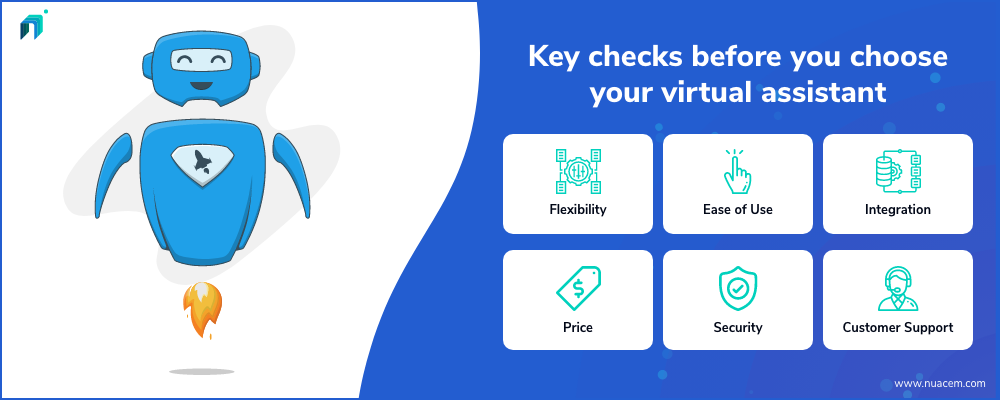
A virtual assistant takes care of tasks that are important in many areas of business. That could be both technical and also non-technical aspects. Many organizations have been recruiting virtual assistants for many years. However, with an advancement of technology particularly in the field of artificial intelligence, artificial intelligence personal assistants have been effective and efficient enough to be brought into the business.
However, choosing the perfect virtual assistant that suits exactly your needs is still hard. There are a lot of options to choose from and a lot of considerations to make.
In this article, let us discuss all key checks before you choose and answer the questions like which is the best AI assistant? So that you can decide on which virtual assistant to use.

Your Needs vs its Capabilities
It is never an understatement to say that you need your needs identified before you can choose anything. It can be hard, but the payoffs it gives are worth it.
This is important because not all automated virtual assistants are the same and each has its capabilities and limitations.
So, first, try to identify all of your needs before you begin searching for a chatbot virtual assistant. This actually is part of an initial investment you do in automated virtual assistants. The other part is in the actual integration of it in your tasks through an initial setup and learning curve.
While a perfect answer is desirable, it may not be possible for you. Even a high-level understanding of your needs would be certainly helpful.
Also, while doing these, it is advisable to write your needs in priority order. This is because the final decision would depend on a lot of other factors and if all do not reach the optimum level, like budget not being sufficient, you may need to sacrifice certain low priority features for high priority ones.
After you get a rough idea regarding your needs, check the capabilities of a particular virtual assistant. You may not be able to completely understand how a particular assistant software works, in that case, ask for a demo and most likely an organization would provide a live demo for the software in which you can ask and clarify all doubts.
If the capabilities of virtual assistants match that of your needs, then you can get it right away!
Trending Bot Articles:
2. Automated vs Live Chats: What will the Future of Customer Service Look Like?
4. Chatbot Vs. Intelligent Virtual Assistant — What’s the difference & Why Care?
Flexibility
While we stress identifying your requirements, it might not be possible and also, your requirements change depending on your situation and you may want different capabilities in the future.
The automated virtual assistant solution you take must not only satisfy your current needs but needs to be flexible enough so as to accommodate your future changes effectively and efficiently.
Ease of Use
Not only must the personal assistant satisfy all your needs, but it must also do so in a way that is easy for you to use. There are two ways to think about ease of use: initial learning curve and general user experience. A combination of them will let us understand the ease of use of an application. It is highly good if an initial learning curve is less and the general user experience is great. But, if the user experience is great but requires a high initial learning curve you can give it a shot considering your current context.
If neither learning curve nor user experience is on great terms, then the tool might not be worth it.
Integration
In this digital world, you would have your workspace smeared across multiple channels. In order to effectively work for you and your organization, your online personal assistant must be able to integrate into all important channels and gather or put data into these channels.
So, make sure that an AI virtual assistant you choose has a lot of integrations in all the channels you work in.
Price
Your organization might or might not have a huge budget to spare for obtaining automated virtual assistants. So, seeing the pricing of an online virtual assistant is important.
Quite usually, platforms would have several plans that are tailored to different needs and also, include a free tier or at least a trial plan for some time that lets you completely test it and see it in action.
Also, if you find that all of their plans are not suited for your particular need, most of the organizations would help you to create a customized plan that works best for you!
Security
Your personal assistant knows a lot about you and the security of data must be of paramount importance.
Try to understand how a particular platform secures your data. Typically, you need complete encryption of data and secure ways for accessing it.
Also, completely study their terms and conditions of usage, especially privacy policy so that you would have an idea as to what they would do with your data. Most likely, the software would use your data for improving their virtual assistant algorithm, and only use this data anonymously, that is, without including information that could identify you.
Customer Support
While using a virtual IT assistant, you could be running into certain problems that can easily and sometimes, only be solved by a representative of the organization. That is, you need effective and timely customer service.
So, make sure that an organization provides essential customer service operations like Live chat, ticketing system, and others. Studying reviews about products especially in the area of customer service would help to get an understanding of this aspect.
Once you get confirmation that customer support is great, you can be without any worries about future problems.
Final Words
As much as automated virtual assistants can help you, they can only do so if their capabilities are highly appropriate for your requirement. By considering and analyzing all-important checks like understanding your needs vs their capabilities, flexibility, integrations, and others, you can make an informed decision as to what artificial intelligence personal assistant to take.
So, follow them and improve your productivity exponentially!
Don’t forget to give us your 👏 !



Key Checks Before You Choose Your Virtual Assistant was originally published in Chatbots Life on Medium, where people are continuing the conversation by highlighting and responding to this story.
-
Intelligent Content Management Using Chatbot Technology: 5 Key Tips You Should Know
Source: https://www.syncfusion.com/blogs/wp-content/uploads/2020/01/tile.jpg Chatbot technology has become an inextricable part of good customer service nowadays, but it can do so much more for your brand and your customers. In fact, there are many reasons why you would want to integrate a chatbot into your website, and also have a social media bot to communicate with your followers. For one, a chatbot allows you to take a lot of the pressure off your human staff and allow them to focus on the complex problems while the bot handles menial tasks, simple queries, and some repetitive issues that your customers might regularly come across.
That said, now that conversational AI is becoming more and more available to companies around the world, it’s also important to note that chatbot technology is starting to boost business processes across the board. One of these is definitely content marketing, and you can use your chatbot to take your content strategy forward, and you can use some sound content practices to improve and optimize your chatbot.
Let’s put all of this into perspective and talk about intelligent content management using chatbot technology in 2021 and beyond.

Provide a more personalized experience
Nowadays, one of the most important pillars of long-term success online is personalization. Your goal should be to personalize every experience on all customer touchpoints as much as possible in order to acquire and retain loyal customers organically. After all, people want to read stories and consume content that is highly relevant to them and their needs — content that will address their pain points and deliver a solution to their unique problems.
There are some pretty amazing content marketing examples you can use as inspiration and effectuate yourself with the use of chatbots. This is where chatbot technology can prove invaluable, in fact, as it can allow you to personalize and customize every customer interaction on every touchpoint. Your chatbot has the ability to deliver only the content that matters to the individual based on their online behavior, past interactions with the chatbot, and other factors, effectively guiding them to the content that solves their problems.
This makes for a highly effective and highly personalized content distribution strategy for your brand.
Trending Bot Articles:
2. Automated vs Live Chats: What will the Future of Customer Service Look Like?
4. Chatbot Vs. Intelligent Virtual Assistant — What’s the difference & Why Care?
Improve engagement with visual content
Content nowadays goes beyond long-form articles or short-but-to-the-point blog posts, even though written content will always be king and has the most impact on your SEO. If you want to stand out in the competitive online market, though, and drive as much engagement as possible across different channels, you need to invest in other content types as well. For the most part, this means investing in visual content, specifically videos.
Now, you could develop your video strategy manually and sift through all the customer and audience data yourself, but you could also use your chatbot to tell you what type of visual content your audience wants to see. Keep in mind that every customer is at a different stage in their journey, and so it’s important to give them the visual content that will address their needs.
What’s more, now that the latest visual content marketing statistics show that original graphics and videos are the key elements of meeting your marketing goals, it’s more important than ever before to invest in creating quality visuals for your audience. That said, it’s not just about the quality, it’s also about proper dissemination, and you can use your chatbot and the data it has on your customers to deliver the right visuals, to the right person, and the right time.
Help sales reps achieve success
Modern sales agents can often wear many hats in an organization, and aside from handling the sales process itself, they are often tasked with organizing and contextualizing customer data, keeping track of where every lead is in the sales funnel, as well as some administrative tasks. While your sales experts might be perfectly capable of handling all of those responsibilities, they would be much more productive and effective in their work if you included an AI-driven solution into their process.
There are many ways in which sales AI can help reps grow revenue, and when it comes to chatbot technology, it can take a lot of the pressure off your human staff. You can have an internal chatbot handle their menial administrative tasks and help them organize all data, or you can have a sales chatbot on the customer-facing end to guide leads towards the best product or service for their needs.
If the customer is at that stage in their journey when they are ready to buy, the chatbot can easily close the deal, but it can also assist in any stage of the customer journey. Some people are not ready to buy and are merely looking for quality information, while others are comparing their options — both groups can get relevant content and solutions from your AI-driven chatbot.
Provide stellar customer service
It should go without saying that using a chatbot is one of the top ways to provide swift customer service to your customers, and do it in a way that ensures brand consistency across all touchpoints. Now that more and more businesses are creating omni-channel experiences and engagement strategies, it’s more important than ever before to present a consistent brand image wherever your customers decide to engage with your company.
While you might not have the human resources in-house to manage these channels, you can leverage your website chatbot to provide stellar customer service to every visitor. You can also use various social media bots to handle customer queries and issues on different channels, and guide them to a positive outcome.
The best part about this is that you can provide the kind of customer service that people want and need — prompt, exact, and personalized. An intelligent chatbot will not only engage with the customer and resolve their issue or answer their question, it will also boost the upselling potential of the interaction.
Your chatbot can suggest additional, complementary products and services that might interest the customer, or even offer package deals, discounts, and loyalty perks. You simply need to implement these features into the bot and watch as it transforms customer service into a powerful upselling tool.
Make internal processes or your app more efficient
Last but not least, consider adding an internal chatbot into your company’s proprietary software to boost productivity and efficiency in the workplace, or if you have an app that the customers are using, be sure to integrate a chatbot to make their lives easier. One of the most creative examples of how an in-app chatbot can help comes from Animaker and their personal assistant Max, which they have integrated seamlessly into the software to achieve a more user-friendly experience.
Customers can call on Max (an intelligent chatbot), to help them with video creation and finding the settings and features they need, which creates an amazing customer experience for all users. You can use the same method to create an intelligent chatbot for your apps, and help your teams to better work or help your app users get the content they need.
In either case, the chatbot will help provide the content, guidance, and help people need to achieve their goals.
Over to you
Content management becomes easier and more effective when you leverage the right tech, and chatbot technology should definitely be at the forefront of your strategy. With these tips in mind, go ahead and maximize the potential of your chatbots to deliver stellar customer service, provide the best content possible to all users, and even disseminate valuable information to your team members.
Don’t forget to give us your 👏 !



Intelligent Content Management Using Chatbot Technology: 5 Key Tips You Should Know was originally published in Chatbots Life on Medium, where people are continuing the conversation by highlighting and responding to this story.
-
Anyone experienced with SMS chatbots?
I want to convert some forms to chatbots so I can text the answers into a database when I’m out in a field. Idk if it would even count as a chatbot but there would be some rough tree structure.
submitted by /u/Largomouth
[link] [comments]



